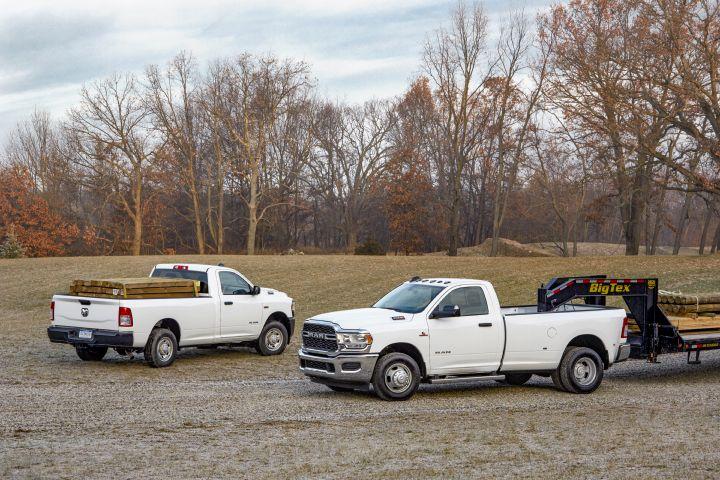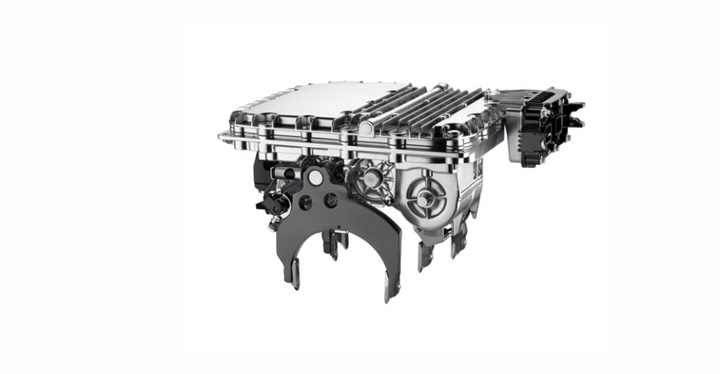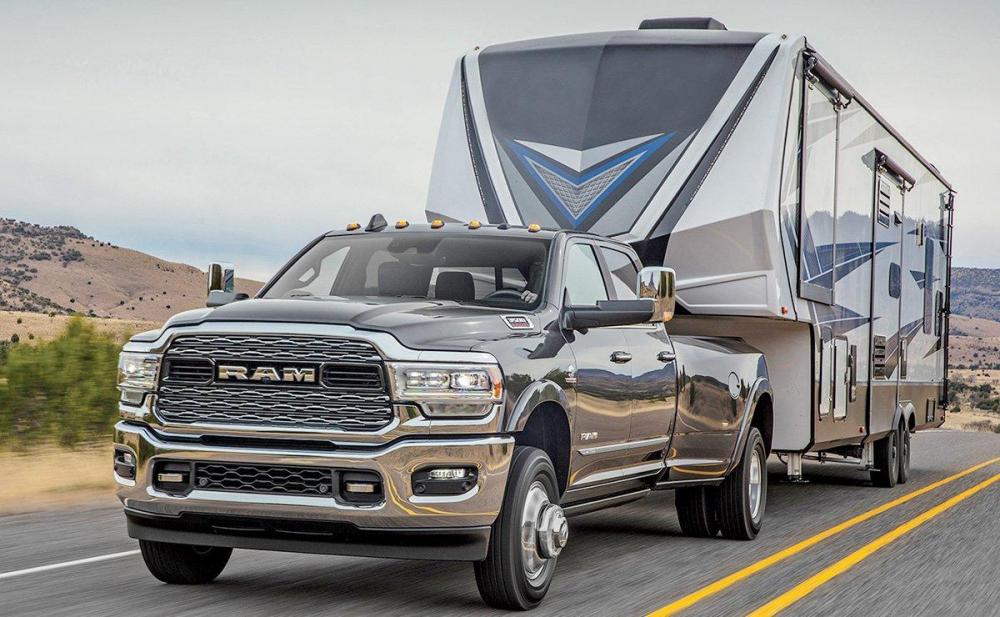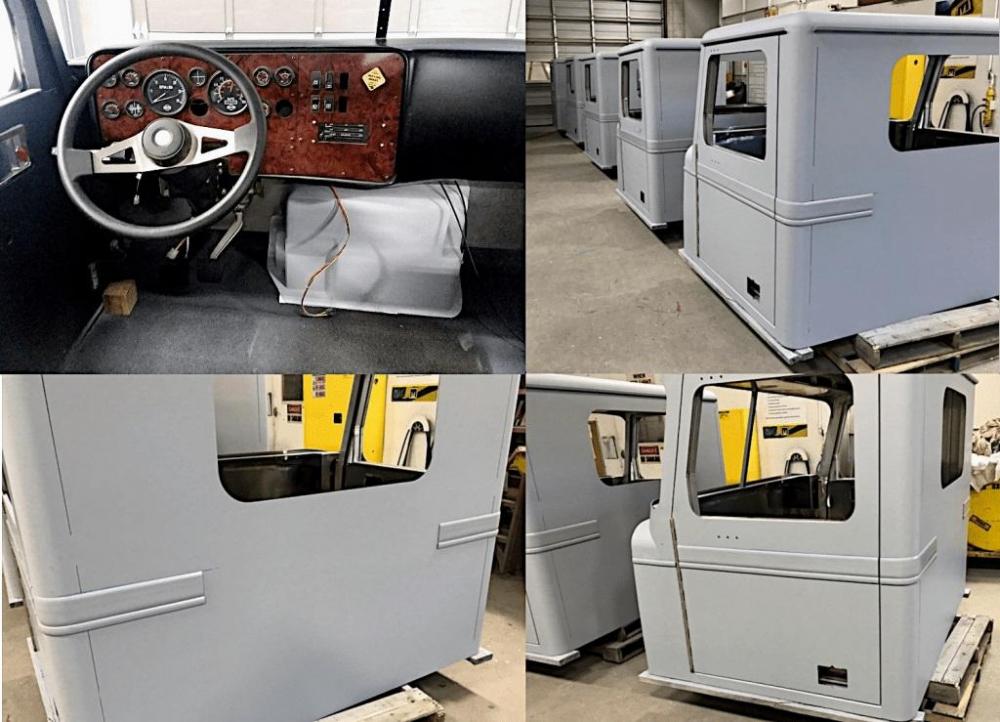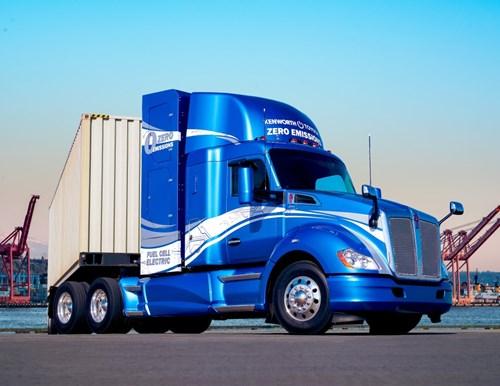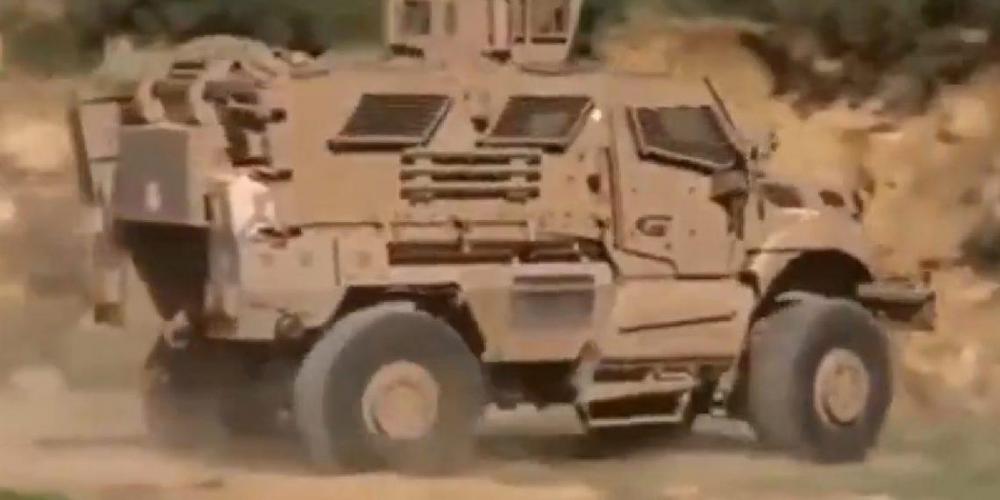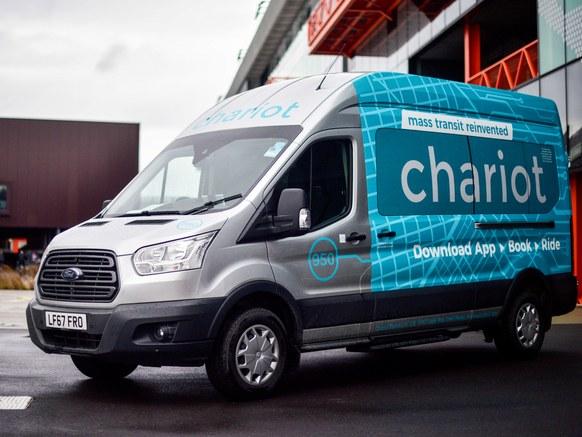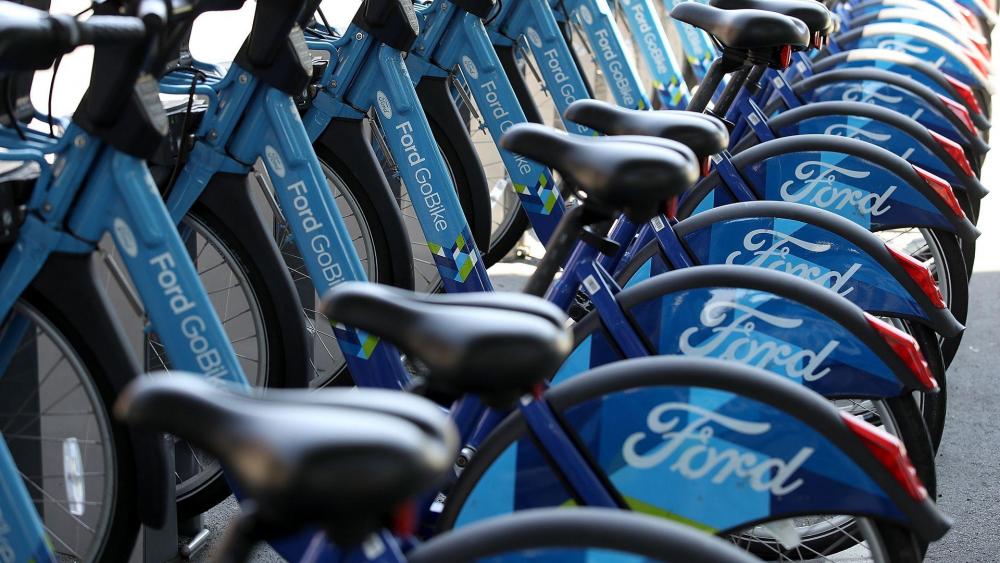
kscarbel2
Moderator-
Posts
17,891 -
Joined
-
Days Won
86
Content Type
Profiles
Forums
Gallery
Events
Blogs
BMT Wiki
Collections
Store
Everything posted by kscarbel2
-
Donaldson air filter housing, butterfly valves?
kscarbel2 replied to BlueDogDozing's topic in Engine and Transmission
You have a truck with the inside-outside [engine] air intake option (with in-cab control). -
2019 Ram HD Offers Most Powerful Pickup Engine Ever Heavy Duty Trucking (HDT) / January 13, 2019 Ram Commercial has boosted performance and capability of its 2019 Ram Heavy Duty (2500 and 3500) pickup trucks with a new, high-output 6.7-liter Cummins inline-six-cylinder engine with the most power of any light-duty pickup on the market. The trucks, which were unveiled at the Detroit auto show, also add more technology and interior upgrades, including the 12-inch landscape touchscreen found in the 2019 Ram 1500. The newly updated pickups will go on sale by July 1, according to Dave Elshoff, a Ram spokesman. The Ram 2500 and 3500 pickups are powered by three engines, including a pair of updated 6.7-liter inline-six cylinder Cummins turbo diesels and standard 6.4-liter Hemi V-8. A high-output 6.7-liter Cummins that tops the engine lineup produces up to 400 horsepower and 1,000 lb.-ft. of torque. Ram engineers were able to achieve a significant boost in horsepower and torque, while reducing overall engine weight by 60 pounds. The second 6.7-liter Cummins turbo diesel produces 370 hp and 850 ft.lb. of torque. The Ram HD's base V-8 gasoline engine power has been increased to 410 hp and 429 lb.-ft. of torque. The engines will deliver their power via three transmissions. Ram is pairing its high-output diesel with the Aisin AS69RC six-speed automatic that improves shift quality. The standard 6.7-liter diesel will deliver power through an upgraded Ram 68RFE six-speed automatic transmission. Ram is pairing its Hemi V-8 with a new TorqueFlite 8HP75 eight-speed automatic transmission. The increased power has boosted the hauling capabilities of the Ram HD trucks to a maximum of 7,680 pounds of payload and 35,100 pounds of tow weight. To achieve these weights, the truck would need to be equipped with the high-output 6.7-liter diesel engine. In addition to the added power, Ram has reduced overall weight by up to 143 pounds by incorporating lighter-weight materials in the frame, powertrain, and with an aluminum hood. Ram is adding a third cab, called a Mega Cab, alongside the regular and crew cab models that will offer 258 liters of interior storage capacity. Technology upgrades include a new 360-degree surround-view camera with a trailer reverse guidance view and an advanced trailer tire pressure monitoring system that accomodates up to six pickup tires (for dual rear-wheel models), 12 trailer tires, and four towing profiles. The fully redesigned interior adds the Uconnect 4C navigation system with a 12-inch screen. The trucks add more than 100 available safety features such as automatic emergency braking, a cargo-view camera, and Ram 3500 back-up sensors with wider coverage for dual-rear-wheel trucks. Ram will also offer an updated 2019 Power Wagon based on the 2500 pickup with new content such as a 360-degree camera, front-mounted WARN Zeon-12 winch, and a Power Wagon package for the Tradesman model. The trucks will be built at the Saltillo Truck Assembly Plant in Coahuila, Mexico. .
-
Heavy Duty Trucking (HDT) / January 14, 2019 Wabco has announced a global long-term agreement to supply its next-generation automated manual transmission (AMT) control technology to Daimler. Wabco will develop and introduce its next generation AMT control technology into Daimler‘s global truck and bus series production. With a lighter-weight, robust, and more compact design, according to Wabco, the new gearbox control unit reduces noise levels, optimizes gear shifting performance, and increases driver comfort. In addition, the new system is designed to support an extensive range of different truck types, gearboxes, and market-specific functionalities, which will support global AMT technology to further increase penetration in all regions. With more than 4 million systems sold, Wabco’s AMT solutions help to improve vehicle safety and comfort for commercial vehicle drivers. Eliminating the distraction of gear changing in diverse driving conditions and environments, the system enables drivers to fully focus their attention on the road. It also removes any performance and efficiency gaps between skilled and less experienced drivers. .
-
A closer look at the all-new Ford Trucks F-MAX
kscarbel2 replied to kscarbel2's topic in Trucking News
-
Ford to run DAKAR 2019 with two 4x4 Cargo trucks
kscarbel2 replied to kscarbel2's topic in Trucking News
-
2019 Ram Heavy-Duty Pickup Muscles Its Way into the 1000-LB-FT Club Andrew Wendler, Car & Driver / January 14, 2019 Refreshed 6.7-liter Cummins turbo-diesel / all-new body and chassis With all three of the major players in the heavy-duty truck segment offering diesel pickups that have crested the 900-lb-ft torque plateau, it was only a matter of time until one of them eclipsed the magic 1000-lb-ft mark. The 2019 Ram Heavy Duty is the first to claim the title, thanks to a heavily reworked version of the venerable Cummins inline-six turbo-diesel. Hitting the 1000-lb-ft measurement right on the head in its high-output configuration, it enables a Ram 3500 regular cab 4x2 long-box dually equipped with the Max Tow package to tug a ridiculous 35,100 pounds or carry a 6570-pound payload. But there's more to the story than just raw grunt. Air Springs and High-Strength Steel The truck is essentially new from the ground up, built on a new frame that makes extensive use of high-strength steel—98.5 percent, according to Ram—for improved strength and weight savings, with six crossmembers and fully boxed rear sections. A pair of Active-Tuned Mass Modules similar to those used on the 2019 Ram 1500 help dampen vibration. Suspension upgrades include new, stronger and lighter front and rear axles, plus progressive springs and upgraded bushings. The 3500 one-ton has rear leaf springs, while the 2500 three-quarter-ton retains the coil-spring setup. Rear air springs are available, with the 2500 setup replacing the traditional springs with a pair of air springs. The 3500 supplements the leaf springs with air bags, allowing the engineers to spec a smoother-riding leaf spring when the truck is unladen. Three modes of operation control the air springs: Normal/Payload automatically detects the load and adjusts the springs accordingly, Trailer Mode allows the bed to lower about an inch to maintain a level relationship with the trailer, and Bed Mode permits lowering of the bed to simplify trailer hookup or ease loading. Riding atop that frame is a freshly restyled body that features an increased amount of high-strength steel, which, combined with an aluminum hood and other weight-saving measures, contributes to a claimed 143-pound overall weight reduction. Engineers strived for a sleeker profile and managed to come out of the wind tunnel with a 0.41 drag coefficient, the lowest ever for a Ram HD. The bodywork is exclusive, too, sharing no panels with the recently refreshed Ram 1500. Combined with new engine mounts, hydraulic body mounts at the C-pillars, active noise cancellation, new exhaust components, and the aforementioned vibration dampeners, Ram says it has lowered the ambient interior sound level by 10 decibels, a claim we will gladly confirm when we test one. Extensive revisions were also made to the electrical system, including two available dual alternator setups to make sure all the latest tech features, instrumentation, and accessories function properly and to ensure plenty of power and junction points for upfitters who reconfigure the Ram chassis for commercial and emergency-vehicle use. The interior continues the brand-wide uptick in quality and refinement started by the recently redesigned Ram 1500, emphasizing a new instrument panel, upscale materials, and a revised HVAC system that moves a higher volume of air while simultaneously reducing noise. Electric heating elements on diesel models speed up the delivery of warm air on cold mornings. The redesigned center console provides enough storage area to put a 15.0-inch laptop out of sight and offers three USB ports in front and two in back for a total of five; three of them, including one in back, communicate with the Uconnect infotainment system. A 5.0-inch screen is standard; an 8.4-incher is optional, as is a fully configurable 12.0-inch screen with unique graphics keyed to individual Ram models. Powertrains Built for Towing and Hauling Looking deeper into the powertrain, the lineup starts with a naturally aspirated Hemi 6.4-liter V-8. (The previous base engine, the 5.7-liter Hemi, has been removed from the lineup.) Rated at 410 horsepower and 429 lb-ft of torque, the 6.4 sends its output to the maker's 8HP75 eight-speed automatic transmission made by ZF. Beefed up for HD duty with additional planet gears for two of the gearsets, a reinforced torque converter, and a heavy-duty parking pawl, it uses sixth gear as direct drive and seventh and eighth as overdrives. Interestingly, the Ram HD's maximum payload figure of 7680 pounds is earned by a regular-cab long-box 3500 dually model equipped with the 6.4 gasoline Hemi V-8. It's not that the diesel couldn't handle the load, but the gasoline engine's lighter weight contributes less to the gross vehicle weight rating. Revisions to the Cummins 6.7-liter inline-six turbo-diesel are significant. Ram claims the new engine is 60 pounds lighter than its predecessor. New pistons, said to be lighter and stronger, utilize low friction rings and ride on new forged connecting rods in a new block made from compacted graphite iron. The new cast-iron cylinder head is home to new rocker arms, exhaust valves, and springs. Compression ratio for the standard output is 19.0:1; the high-output version uses a lower 16.2:1 ratio to facilitate additional boost. Speaking of which, the improved variable-geometry turbo mounts to a new exhaust manifold and is capable of delivering up to 33.0 psi of boost; the intercooler has been enlarged to the point where Ram calls it the largest ever fitted to its diesel pickups. The redesigned fuel-delivery system features a new pump running at 29,000 psi. The standard-duty model is rated at 370 horsepower at 2800 rpm and 850 lb-ft at 1700 rpm; the high-output version clocks in at 400 horsepower and 1000 lb-ft at 1800 rpm. Shifting duties for the standard-output 6.7-liter diesel fall to an upgraded version of the six-speed automatic transmission used previously. Shift quality is said to be improved by the use of variable-force solenoid controls for the torque-convertor clutch, and a new reverse accumulator improves shift feel when going from park to reverse. Additional hydraulic elements were tweaked to smooth the shift from drive to park. Buyers opting for the high-output diesel get an Aisin six-speed automatic transmission with a larger thrust bearing and additional heat treating for specific components. Choosing four-wheel drive brings a trio of transfer-case options. The 6.4-liter Hemi gasoline V-8 and standard-output 6.7-liter diesel powertrains utilize a BorgWarner transfer case with either a manual (BW-44-47) or electric (BW 44-46) shift. The low-range ratio is a 2.64:1 reduction. Harnessing the mountain of torque from the high-output Cummins requires the talents of the new and hefty BorgWarner part-time transfer case (BW 44-48) that is designed to withstand the 3500's tow rating of 35,100 pounds when equipped with the Max Tow package (trailer-brake controller, cargo-view camera, fifth-wheel hitch, 12-inch rear axle with a 4.10:1 ratio gear set, larger bearings, dual rear wheels, and a few additional items). Ram says the braking system has been upgraded with a new brake booster and master cylinder. We'll have to take Ram's word for it for now, but we can tell the front rotors measure 14.7 inches and the rears 14.1 inches and both are pinched two-piston calipers. Either way, Ram points that braking on the diesel models is aided by an integrated exhaust brake. Power Wagon and Trim Levels As usual, Ram will offer its HD pickup in Power Wagon form. Based on the 2500 4x4 Crew Cab, it brings a distinct suspension with factory lift, locking front and rear differentials with 4.10:1 gears, a disconnecting anti-roll bar, and a Warn winch with a kink-resistant synthetic cable that weighs in at 28 pounds less than a comparable steel cable. It's also still possible to order the Power Wagon content on the base Tradesman model while retaining the Tradesman design elements. Six trim levels fill out the 2019 HD lineup: Tradesman, Big Horn (rebranded as Lone Star in Texas), Power Wagon, Laramie, Laramie Longhorn, and Limited. In addition to the usual smorgasbord of tech, luxury, and utility options available a la carte, buyers can select from numerous body configurations including a regular cab with a 169.1-inch wheelbase and an 8.0-foot box, a crew cab available in either a 149.1-inch wheelbase with a 6.4-foot box or a 169.1 wheelbase with an 8.0-foot box, and Mega Cab models with a 160.2-inch wheelbase with a 6.4-foot box. There are 12 exterior colors offered, including three new ones: Billet Silver, Patriot Blue, and Diamond Black. Six new eight-lug wheel designs ranging from 17 to 20 inches are also on tap. The heavy-duty truck segment lives and dies by the numbers, and when you're talking diesels it's torque that gets the headlines. No matter that most casual owners will never come close to exploiting the maximum capability of the 1000-lb-ft beast, this is Ram's time in the spotlight. No doubt Ford and Chevrolet are already plotting strategies to knock it off its perch. Photo gallery - https://www.caranddriver.com/photos/g25858874/2019-ram-heavy-duty-pickup-photos-info-gallery/?slide=1
-
Limited edition Diamond T glider kit offering unveiled
kscarbel2 replied to kscarbel2's topic in Trucking News
-
Power move: Ram hits 1,000 lb.-ft of torque Richard Truett, Automotive News / January 14, 2019 Grunt now needs an extra digit. The diesel pickup torque tug-of-war being waged among Detroit's truck brands lurches into 2019 with a change at the top of the leaderboard: The re-engineered 2019 Ram heavy-duty 3500 pickup arriving soon at dealerships sports the industry's first engine to crank out 1,000 pound-feet of torque. That torque figure is not a PR and marketing gimmick — although the figure will no doubt feature prominently in ads. It's an important measurement buyers who tow and haul heavy loads consider when they shop for heavy-duty pickups. The 1,000 pound-feet rating is a 70 unit bump over the outgoing 2018 truck's top torque. The engine will be optional only in the biggest, most expensive Ram, the 3500. A lower-power six-cylinder diesel will be offered along with a gasoline engine in the Ram 2500 and also the 3500. Ram is dropping the manual transmission option in the 2019 models. The power boost comes courtesy of the next-generation Cummins diesel engine. Though it remains 6.7 liters and an inline-six, the engine has been redesigned to not only boost power, but also to reduce weight, Fiat Chrysler Automobiles says. Ram, which has used a Cummins-built inline six in its heavy-duty trucks for 30 years, edges out Ford's 6.7-liter Powerstroke diesel V-8, which has a torque rating of 935 pound-feet. The 6.6-liter Duramax diesel V-8 in the redesigned heavy-duty Chevrolet Silverado and GMC Sierra pickups coming midyear is rated at 910 pound-feet of torque. When it comes to horsepower — which is more closely related to a vehicle's top speed, not its hauling capability — both the Ford and GM diesel heavy-duty V-8 truck engines outhustle the Ram's inline-six. Ford's Powerstroke heavy-duty diesel is rated at 450 hp and GM's Duramax is 445 hp. Ram is rated at 400 hp. Upgrades to the Ram's Cummins engine include: A new lighter, stronger cylinder block made of compacted graphite iron, which replaces cast iron. The new block reduces vibration and helps lower weight by 60 pounds. A hollow camshaft, new rods and low-friction bearings. Lighter and stronger pistons with low-friction rings. A redesigned exhaust manifold and improved turbocharger with higher boost pressure. Fuel injectors that can handle 29,000 pounds of pressure. One key piece of information Ram has not revealed is the price of the 3500 with the 1,000 pound-feet engine. But the price bump over lower-powered counterparts is likely to be significant, perhaps around $11,000. On the 2018 Ram 3500 with the high-output engine, the price walk looked like this: Choosing the Cummins engine over the available gasoline Hemi V-8 added $9,300. And getting the high-output diesel meant adding another $2,695. Ram's lead in torque and maximum towing may be short-lived. Ford plans to launch a redesigned Super Duty pickup second half of this year. --------------------------------------------------------------------------------------------------------------------------------- Putting on muscle 1989 Dodge launches Cummins diesel in the Ram pickup Horsepower: 160 with auto transmission (175 with manual) Torque: 400 lb.-ft. 2001 High-output Cummins engine introduced Horsepower: 235 Torque: 505 lb.-ft. 2011 Horsepower: 350 Torque: 800 lb.-ft. 2016 Horsepower: 385 Torque: 900 lb.-ft. 2018 Horsepower: 385 Torque: 930 lb.-ft. 2019 Cummins engine redesigned Horsepower: 400 Torque: 1,000 lb.-ft. .
-
Go ahead and laugh. What could I possibly know? Good day sir.
-
That’s what the western press said....yes. Not the true situation on the ground.
-
I was there during the Olympics,. Having toned down the rural factories in surrounding Hebei, the air quality was pretty good. Pooh hasn’t been banned.....don’t believe everything you read.
-
Limited edition Diamond T glider kit offering unveiled
kscarbel2 replied to kscarbel2's topic in Trucking News
I touch base with them from time to time. They are busy and confident. -
Not at my fingertips, no. Mack engineering explained this to me years ago.
-
Per each R/F/U/DM truck, you need 4 pieces of Mack part number 440SX30A (or perhaps it's sold under a Volvo global part number now). The 440SX30A is for the tracks on the removeable door panel, and the upper section of the door (you'll need to cut/shorten that upper piece). You only use the included brass retaining clips on the door panel tracks. The vent window post felt is different, and is (was) sold under a vendor number, 2795-170014005. The roll-up window "wipers" are Mack part numbers 35RU223 and 35RU224 (2 each).
-
Here we go again with US Inc. unreasonably telling other sovereign countries what they should and shouldn't do in their own neighborhoods. So what if Ukraine loses the "lucrative gas transit fees". It's not our concern. Isn't that what a free market is all about? We can't lecture China about having a free market, and act oppositely in Europe. If we're ever to lead the world again, we need to earn respect through reasonable foreign policy. Folks who bully others never scored any points with me.
-
Reuters / January 13, 2019 The U.S. ambassador to Germany has warned companies involved in the construction of the Russian-led Nord Stream 2 gas pipeline that they could face sanctions if they stick to the project. The pipeline, which would carry gas straight to Germany under the Baltic Sea, is driving a wedge between Germany and its allies as it would deprive Ukraine of the lucrative gas transit fees it currently enjoys. U.S. Ambassador Richard Grenell addressed the issue in a letter sent to several companies. “The letter reminds that any company operating in the Russian energy export pipeline sector is in danger under CAATSA of U.S. sanctions.” Germany and other European allies accuse Washington of using its Countering America’s Adversaries Through Sanctions Act (CAATSA) to meddle in other counties’ foreign and energy policies due to its extraterritorial effect. Russian gas giant Gazprom is implementing the project jointly with its Western partners - Uniper, Wintershall, Engie, Austria’s OMV and Anglo-Dutch group Shell. German Foreign Minister Heiko Maas said on Thursday that any U.S. sanctions against Nord Stream 2 would be the wrong way to solve the dispute and that questions of European energy policy had to be decided in Europe, not in the United States.
-
Limited edition Diamond T glider kit offering unveiled
kscarbel2 replied to kscarbel2's topic in Trucking News
Diamond T Custom Truck & Chassis is proud to introduce the all-new T9800 series long nose conventional. Featuring classic looks, a set-back front axle and our new aluminum "Driver II" cab, the T9800 series is the latest version of the proven T-Line 9000B conventional which has proven itself since 1995. Now in production, the new T9800 series is available with big bore powerplants up to 600 horsepower. T9820B Glider Kit Standard Specifications - https://tlinetrucks.com/wp-content/uploads/2019/01/T9820GliderSpecSheet-1-1.pdf -
Limited edition Diamond T glider kit offering unveiled
kscarbel2 replied to kscarbel2's topic in Trucking News
The first production run of the Diamond Reo "Driver II" cab. Shown below, the all-new custom aluminum Driver II cabs featuring body molding, two-piece windshields and other styling cues that pay tribute to the old Corporate and Driver cabs. . -
Toyota Explores Heavy Truck Hydrogen Fuel Cell Application
kscarbel2 replied to kscarbel2's topic in Trucking News
Kenworth and Toyota Collaborate To Develop Zero Emission Trucks Kenworth Truck Co. Press Release / January 8, 2019 LAS VEGAS, Nevada - Kenworth Truck Company and Toyota Motor North America are collaborating to develop 10 zero-emission Kenworth T680s powered by Toyota hydrogen fuel cell electric powertrains. This collaboration is part of a $41 million Zero and Near-Zero Emissions Freight Facilities (ZANZEFF) grant preliminarily awarded by the California Air Resources Board (CARB), with the Port of Los Angeles as the prime applicant. The grant monies are part of a larger $82 million program that will put fuel cell electric tractors, hydrogen fueling infrastructure, and zero emissions cargo handling equipment into operation in the ports and Los Angeles basin in 2020. The Kenworth T680s will transport cargo across the Los Angeles basin and to inland cities – such as Ontario and San Bernardino – while generating zero emissions, other than water vapor, thanks to their fully electric hydrogen fuel cell powertrain integrations co-developed by Kenworth and Toyota. “This is an excellent opportunity for Kenworth and Toyota to work together to both explore and drive the development of advanced zero emission technologies that will play a critical role in the commercial transportation of the future,” said Mike Dozier, Kenworth general manager and PACCAR vice president. “This is not just a science experiment, the goal is to make a difference in society. To remove pollution and improve the air quality in and around the Port of Los Angeles,” said Bob Carter, executive vice president, Toyota Motor North America. The Kenworth T680s with the Toyota hydrogen fuel cell electric powertrains combine hydrogen gas and air to produce electricity. The electricity powers electric motors to move the trucks, while also charging the lithium-ion batteries to optimize performance as needed. Sophisticated power management systems will apportion the electrical power from the fuel cells to the motors, batteries, and other components, such as electrified power steering and brake air compressors. The hydrogen fuel cell electric powered Kenworth T680s will have a range of over 300 miles under normal drayage operating conditions. The program will also fund foundational hydrogen fuel infrastructure, including two new fueling stations that, subject to a final investment decision by Equilon Enterprises LLC (dba Shell Oil Products U.S.), will be developed through Shell Oil Products U.S., to support the operation of the fuel cell electric trucks in Southern California. . . -
Defense Blog / January 12, 2019 The Algeria National People’s Army’s (ANP’s) acquisition of Navistar Defense MaxxPro mine-resistant ambush-protected vehicles (MRAPs) was confirmed on 10 January when the Ministry of National Defense released footage showing the vehicles being used during a live fire exercise. During live fire exercise was spotted several MaxxPro mine-resistant ambush-protected vehicles in service of the 116th regiment of the operational maneuvers RMO of the ANP. The MaxxPro Mine Resistant Ambush Protected (MRAP) is an armored fighting vehicle designed by American company Navistar International’s subsidiary Navistar Defense along with the Israeli Plasan Sasa, who designed and manufactures the vehicle’s armor. The MaxxPro MRAP is built to withstand ballistic arms fire, mine blasts, IEDs, and other emerging threats. Its V-shaped hull helps deflect blasts out and away from the crew and its armoring can be customized to meet any mission requirement. A total of 9,000 vehicles MaxxPro in many variants were delivered to the U.S. Army. In December 2007, the U.S. Marine Corps has ordered 1,500 MaxxPro to Navistar. But they plan to keep only about 3,000 of them. .
-
FCA North America Press Release / January 7, 2019 FCA US LLC installed intelligent lighting systems in two metro-Detroit operations, Jefferson North Assembly Plant and Warren Stamping Plant, helping drive down energy costs by at least 50 percent and improving employee productivity by making the spaces responsive to the needs at each work space. Video demonstrates occupancy sensor capabilities during vehicle assembly. .
-
Detroit Press Release / January 11, 2019 .
-
Ford Axes Its Chariot Shuttles, Proves Mobility Is Hard Wired / January 10, 2019 Chariot has crashed. On Thursday, five years after launching and two and half years after being acquired by Ford for a reported $65 million, the app-based shuttle service announced it is rolling to a permanent stop. Transportation technology companies have never been sexier than in the past decade, but this stumble is a potent reminder that creating a profitable transportation business can be far harder than it seems. When Chariot launched in 2014, it joined a wave of Uber-inspired "microtransit" tech companies hoping to disrupt transportation services by providing faster, more efficient options for riders sick of—and underserved by—traditional public transit. Less than half a decade on, most have gone the way of the Hawaiian tree snail. San Francisco-based, elitist-wooing Leap Transit closed up shop just three months after its March 2015 launch, amid a regulatory fight with California. Bridj, which promised on-demand shuttle services, ceased American operations in early 2017. Shared rides company Via still operates in Chicago, New York, and Washington, DC, but has diversified—it also runs a software business. Meanwhile, Uber itself continues to burn through millions and millions in funding every year, even as it preps for an IPO in 2019. Chariot struggled with ridership, spokesperson Erin Simpson says. Its 14-seat commuter shuttle services, which run limited, public routes in Austin, Chicago, Denver, Detroit, and the San Francisco Bay Area, as well as in London, will shut down February 1. Chariot’s newer initiative, running vans for specific companies, will end in March. Some of its 625 employees could be offered positions within Ford. Turns out transporting people really is very hard. In dense cities, it’s competitive: Riders might choose to use public transit, ride-hail, or even the bike- and scooter-share networks that now blanket so many city sidewalks. In less dense places, the transportation business is pricey: Dispatching vehicles to retrieve far-flung passengers takes time and plenty of fuel. And transportation firms generally must contend with regulators, another oft-expensive hurdle. In October 2017, California briefly shut down Chariot’s operations in the state after discovering some drivers did not have proper licenses. Chariot, which in San Francisco was charging $3.80 for off-peak rides and $5 during rush hour, always had a difficult road ahead. In fact, it hadn’t expanded its public commuter transit options in at least a year. “The microtransit companies would never say this, but you could see from their actions that a market for a public transit service paid for through fares was, at best, very limited,” says Bruce Schaller, a former New York City transportation official who now runs a transportation consultancy. Furthermore, Chariot could only fit so many fare-paying riders into its vans. It owns those vehicles, and its drivers are unionized. “Running a van cheaper than a bus, per passenger, is a daunting idea,” adds Schaller. As Chariot put it in a blog post announcing its death: “In today’s mobility landscape, the wants and needs of customers and cities are changing rapidly. As those changes continue, it has become clear that the mobility services delivered by Chariot over the past five years will not be a sustainable solution going forward.” In recent months, the Ford subsidiary had tried to adjust its business to fit customers’ needs. Though it continued to run its San Francisco-based commuter network, open to any member of the public, it had focused its business on enterprise solutions, signing contracts with private businesses that wanted to give its employees other options for getting to or from work. As recently as December, Chariot CEO Dan Grossman told WIRED that the company was focusing on solving first mile/last mile problems—helping companies connect their offices to major commuter train or bus lines. Grossman also said the company had thought about growing the size of some vans, perhaps up to 28 seats. “We don’t want to put all our eggs in one basket,” he noted then. Ford spokesperson Karen Hampton says lessons learned from Chariot’s run will inform the automaker’s larger mobility business. That includes “routing, dispatch, customer interfaces” at Ford Commercial Solutions, its fleet telematics and data arm; GoRide, its nonemergency medical transportation division; Ford Pass, its mobile application for vehicle owners; and “even the self-driving businesses we are building,” according to Hampton. The company has said that it will have a fully automated vehicle in commercial service by 2021. While Chariot’s demise proves the transit business is a tricky one, tech-enabled shuttle services aren’t dead. Public transit agencies—including Los Angeles’ Department of Transportation—are still experimenting with on-demand options, which riders beckon with a call or tap of an app. Agencies hope these sorts of services might help them cut down the costs of providing public transit in areas with little demand. Flexible van services and jitneys continue to operate in US cities too, including New York City’s robust, decades-old dollar van system. Ford, meanwhile, already has its hands in the latest transit hotness. In November, it acquired startup Spin. The Detroit stalwart has joined the scooter game. .
-
Ford ditches GoBike deal Ford is ending its sponsorship of a Lyft-owned bike-sharing service in San Francisco, reports Axios. In the deal, “part of a larger effort … to transform [Ford] into more than just a carmaker,” bike-share operator Motivate’s bikes were branded as Ford GoBikes. No reason was given for the unwind on Ford’s behalf; the car company is still involved in a scooter rental startup. .
BigMackTrucks.com
BigMackTrucks.com is a support forum for antique, classic and modern Mack Trucks! The forum is owned and maintained by Watt's Truck Center, Inc. an independent, full service Mack dealer. The forums are not affiliated with Mack Trucks, Inc.
Our Vendors and Advertisers
Thank you for your support!



